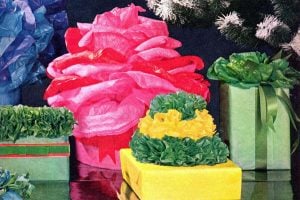George Eastman: The man behind Kodak (1854-1932)
George Eastman, founder of Eastman Kodak, and often called “the father of photography” was many things — a clever inventor, entrepreneur, a shrewd businessman — and, in his later years, a generous philanthropist.
After he gave up his daily management of Kodak to become its treasurer, he spent much of his later years returning a good portion of the fortune he had amassed to the community — especially in and around Rochester, New York.
He made large donations to the University of Rochester, the Massachusetts Institute of Technology and the Rochester Institute of Technology — the latter naming a building on campus after him in recognition for his generosity.

Unfortunately, Eastman was plagued by chronic pain in his final years, most likely from what modern doctors would diagnose as lumbar spinal stenosis, a narrowing of the spinal canal.
Whatever the root cause, it made it difficult for him to stand, and reduced his walk to a slow, painful shuffle.
As Eastman had seen his mother confined to a wheelchair during her final years from the same condition, he grew depressed.
What happened next was described in the April 26, 1954 issue of LIFE magazine:
Monday, March 14, 1932, was an icy winter day in Rochester. In Eastman’s home, it began as usual, with music from the pipe organ.
Eastman was in his bedroom when the Kodak group arrived at 11:15. He helped place their chairs and joked, as he usually did, with his old friend Frank Crouch.
His fountain pen gave him trouble as he started to sign the will, and Crouch suggested he could afford to buy a new one. “You shouldn’t kick about that pen, you gave it to me,” Eastman reminded him.
Eastman signed and the three witnesses followed. They left the room and Eastman’s longtime secretary, Mrs. Alice Whitney Hutchison, came in. It was an old custom of Eastman’s to give $10 gold pieces to anyone who witnessed his signature. He mentioned this to his secretary and told her to go to the bank and get the money.
As she went out the door he called, “Oh, Miss Whitney, get them $20 gold pieces.” She thought about this and was worried; perhaps she had not heard right. She started back upstairs to check on the matter and met Eastman’s nurse.
They walked toward his room and the nurse partly opened the door. Eastman was standing with his back to them. He turned and seemed angry. “What is it?” he demanded.
“I just wanted to be sure, Mr. Eastman,” explained his secretary. “Did you say $20 gold pieces?”
Eastman almost laughed with relief. “That’s right,” he told her. The women closed the door.
Eastman had been smoking a cigaret in his usual black and gold holder. He put this in an ash tray, capped his pen, removed his glasses and lay down on the bed.
He put a folded wet towel over his heart (apparently to prevent powder burns), turned the muzzle of a Luger automatic to the place where his doctor had outlined, and pulled the trigger. It was a few minutes after noon. [Note: Death certificate says the weapon was a revolver.]
On his night table, beside the partly smoked cigarette, was a sheet of lined yellow paper on which he had written with his balky fountain pen.
His last words — “To my friends — My work is done Why wait? GE” — were printed in headlines all over the world; But there was something else on the table which no newspaper mentioned. It was his mother’s sewing basket, with two of her gloves rolled up in little balls inside.
A handwritten farewell
Finally deciding to take matters into his own hands, Eastman ended his life with a single gunshot to the heart on March 14, 1932, at the age of 77.

The handwritten note above and his death certificate (shown below) are both on display at George Eastman House museum in Rochester, New York.
Cause of death appears to read: “Suicide by shooting self in heart with a revolver while temporarily insane.”

George Eastman was cremated, and his ashes buried on the grounds of Kodak Park (now known as Eastman Business Park) in Rochester, New York — on the site of the empire he created.
SEE MORE: George Eastman House: The Kodak inventor’s mansion & photography museum
George Eastman at age 70: Mr Eastman embarks on a new adventure (1925)
By Samuel McCoy, writing in the Times Sunday Magazine, via the MIT Technology Review – February 1925
At the age of seventy, George Eastman finds himself on the threshold of a new life — a spiritual adventure unique in the career of Americans who have amassed great wealth. Whether it will lead him or what philosophy it will develop he cannot tell.
To quote his own words on entering upon the new life, he is going to give himself “the benefit of a somewhat more detached position in respect to human affairs.”
For Mr. Eastman, the days of moneymaking are over. He has toiled for fifty-six years — since he was 14. He has rolled up a fortune and built up a great industry.

He has given away more than $58,000,000, capping his philanthropies with his recent gift of $15,000,000 for educational purposes. Now he intends to stand by in the spirit of detachment and watch the results of his philanthropy develop.
What manner of man is George Eastman? What in his past life foreshadowed this extraordinary climax? What brought him success? What was his mainspring? He told me frankly that he doesn’t know. He has been working so steadily that he has not had time to gauge himself. He is going to find out.
He told me, though not in so many words, that he is about to develop a new negative in his photographic darkroom.
Remember, he is an amateur photographer. “Amateur — one who loves” the work. He has been that all his life.
This time, the plate that he is going to try to develop is his own soul. It has been exposed to the lights and shadows of the world for seventy years. Now he wants to find out what is printed on it. He doesn’t know. No one knows. The supreme experiment!
You shut yourself in a dark-room and place the Kodak film in a shallow tray, in a bath of chemicals and rock it gently. Presently, over the gray surface of the film steals a tracery of lights and shadows.
Mysteriously it takes shape. Out of the unknown comes a picture. It is a miracle. Who knows what the picture will be like until it has been thus developed? No one. That was the answer George Eastman gave me.
Take another simile from the Kodak business. “Sensitiveness.” That word existed before there was ever any such thing as a photographic plate or film. It means the power to feel — the opposite of callousness.
The chemicals which impregnate the cellulose film have the power to feel sunlight. Light affects them instantaneously. They feel — intensely. They are sensitive.

Well, George Eastman is sensitive, amazingly sensitized… Much of the sympathy you feel for the poet springs from your perception of the fact that he feels intensely and cannot adequately express his feeling…
Instantly you will deny this assertion, as applied to George Eastman. You will say that he has already found tremendous self-expression, not only in building up a great business and profiting society through its products, but in giving away millions of dollars to educational institutions for the benefit of generations to come. That’s all very true. But the point is, George Eastman himself is not satisfied with this.
He told me so himself. He told me, not only in his words, but in his silences. He has expressive silences. He would probably be surprised if you told him how much he said in thirty seconds of silence.
The day after the announcement that Mr. Eastman had given $ 15,000,000 more for educational purposes, he said he welcomed the opportunity of making the gift because it “would give him the benefit” — him, mind you, not someone else — “of a somewhat more detached position in respect to human affairs.” That position, obviously, was now worth more to him than $15,000,000.
He is half sorry now that he said that out loud. Not because he doesn’t believe in it thoroughly; but because it gave the public a glimpse into his innermost soul. And he has never believed in revealing himself to anybody.
I wish you might have met him, as I did. He is a shy man. He doesn’t talk about himself. He would rather be shot than talk about himself. Just remember that for seven years the public did not know the mysterious “Mr. Smith” who during that time had given more than $11,000,000 to the Massachusetts Institute of Technology.

So it was that he came shyly out of his own office into the adjoining room, where l was. He hesitated at the door. He pretended to adjust a picture hanging there. He looked over his shoulder as he did so. He was silent. He certainly did not intend to be the first to speak.
He would have sidled out of the room as timidly as he entered it if he had not forced himself with an obvious resolution to remain for a courteous period. He talked with his silences.
Mr. Eastman did talk and make definite statements. But he insisted, with a charming stubbornness, that his precise words must not be quoted. You must accept the assertion that what is written here emanates from an inarticulate mystic, the shy person who lives in George Eastman.
Although one calls him “shy,” do not get the impression that there is anything weak in that shyness. The line of his lips is firm, as befits a man who successfully manages a business of enormous proportions. His eyes, back of his rimless glasses, are keen. When he says “No,” he means “No.”
And he has a quick and ready sense of humor. He doesn’t mind if the joke is on himself. He chuckled, bubbled, at once when I repeated to him a good-humored jest coined about him. He likes good stories, enjoys people and is a generous host in that great mansion of his. He’s thoroughly human. But he does not talk even to his most intimate friends about his spiritual questionings.
“George Eastman never discusses his deep personal feelings with anyone, not even his most intimate friends,” said one who knows him.
“He doesn’t go to church often but he does have a deeply religious nature. His acts show that, his face shows that. He numbers leading clergymen among his close friends, but although you might think that he would discuss his spiritual beliefs with them I doubt very much if he does.
“That’s one thing he won’t talk about. His physician is an intimate friend of his, too, but I’m sure that George Eastman doesn’t talk even with him about his personal philosophy.
“Perhaps that’s because he can’t. Perhaps it’s because he is tongued-tied in that respect. But I prefer to believe it’s because he feels too deeply on such matters and keeps his own sanctuary.”
Now consider the evidence of his life. Between George Eastman and his mother, Maria Kilbourn Eastman, existed the most important relation of his life.
His father died when he was 7. His mother kept the boy in school until he was 14. At 14 he found a job as an office boy at $3 a week. Out of that first year’s earnings, $156, he saved $37.50. By the time he was 25, he had saved $2,500. His mother helped him do that.

Those were grim days for the little family. But their hardships knit them together the closer. George Eastman, recognizing what she had done for him, loved his mother with a passionate tenderness. He never married.
For fifty-three years, until her death in 1907, at the age of 86, they were together.
You may walk around and around that fact — fifty- three years of devotion between mother and son — and from whatever angle you contemplate it you will draw a store of profound significance. In his silences, he speaks of her.
Then, shortly after her death, began the second great communion in George Eastman’s life. It was with music. He listened. George Eastman knows nothing about music, in the ordinary sense. He does not play any instrument. He cannot even hum an air. More, he cannot even tell one composition from another.
And yet he listens to music, demands music, yearns for music, with great eagerness. He has given the money with which to found a school of music, he has maintained a philharmonic orchestra at great expense, built a splendid theatre for Rochester in which concerts are given, and he attends a concert at every opportunity.
But even this is not all. He maintains a string quintet of musicians who play for him whenever he is at home. Sometimes he invites friends to hear these concerts and sometimes he has the quintet play for him in the mornings before he goes to his office.
And all this while he remains, as he stoutly insisted in spite of my skepticism, unable to carry a tune.
Where shall one look for an explanation of this extraordinary devotion to music on the part of a man who believes himself almost deaf to rhythm and melody? The answer lies, I think, in his shyness, and in a desire, a fierce desire, for spiritual companionship.
He listens. He listens to the divine and wordless speech. He cannot get his fill of listening. Deep within, deeper than those nerves which take the facile impressions of melody and beat, something stirs in answer. It is not music; it is a universal and freshening force, bathing and energizing him whom it caresses.
George Eastman’s business in life thus far has been to make things, not to make words. But he once said this:
“One may consider his business as primarily a making of things, or one may set up an ideal and consider those things which he makes only as steps toward an ideal.”
Then he added his definition of an ideal. He called it: “A definite object which can never be reached.”
He said also: “To be successful, a business must have continuity.”
And he added: “Continuity depends upon broad policies that are wrought out of experience. Of these policies, the most important is an idea rather than a thing.”
And he said this: “There is always a fork to every road.”

When one considers the man himself, and not the tangible products of his factories, the man himself and not his wealth, these sentences of his form the chart of a soul’s journey. Others will go along the same roads.
The last sentence lights up the adventure of human exploration into the unknown. The first sentence is as easily transferred from the world of things to the world of character.
From another of these sayings, too, one gets George Eastman’s answer to the question: “How shall one pilot a soul?” He answers that the course must have continuity; and that continuity depends upon truths wrought out of experience.
The man who has worked with the intensity with which George Eastman has worked for fifty years is entitled to receive, at 70, leisure in which to ponder upon the soul’s experiences and its future course.
What are the truths to be wrought out of this long pilgrimage? They are still to be expressed. And perhaps they may never be.
“Why has George Eastman given away nearly $60,000,000?” Isn’t it because he is eager to discover basic truths? There will be continuity in that journey.
At the first, and through bitter years, he struggled to evolve a material thing which would record with delicate sensitivity the seen world; then he found music and hears it speaking its mysterious language that cannot be interpreted again; and now he releases himself for a newer and stranger experiment.
“The mixture of discovery and of extending constitutes the thrilling adventure of business,” he once said.
The adventure of the soul, which he now proposes for himself, must be more thrilling still.




















3 Responses
Story says he killed himself with a luger automatic pistol. Death certificate says it was a revolver. Lugers are not revolvers!
Thanks for the clarification! That might be of interest to other readers. For now, though, it will stay as-is in the article, because (as noted) the Luger mention is part of a direct quote from the April 26, 1954 issue of LIFE magazine. (The death certificate is also there with the revolver mention.)
Stay as is? Isn’t accuracy important in all aspects of an article? I think to be very thorough and show that you are willing to dig into accurate facts substantiates what is written as a whole!